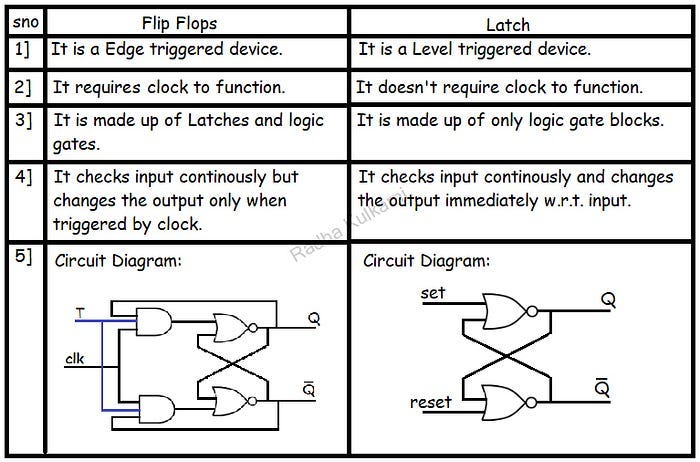Flip-flops, like latches, are circuits designed as bistable multivibrators capable of storing one bit of binary data. They retain their state until instructed by an input to change, making them essential in sequential circuits that require memory elements. Unlike latches that lack a clock input and deliver outputs continuously, flip-flops are triggered by clock cycles, defining their operational speed and state transitions.
The key difference between flip-flops and latches lies in their triggering mechanism and behavior. Latches operate without a clock, providing outputs continuously based on input changes. In contrast, flip-flops are synchronized to clock cycles, ensuring stable output changes only at specific clock edges, enhancing their reliability in sequential operations. Below table shows the difference between Flip flops and Latches:

Explore in-depth explanations of flip flops and latches, accompanied by detailed diagrams, by clicking on the links provided below:
1] Latches
2] Flip Flops
No comments:
Post a Comment